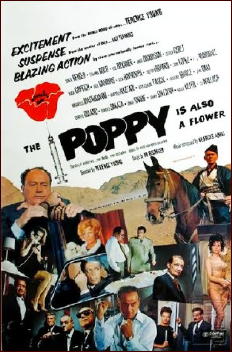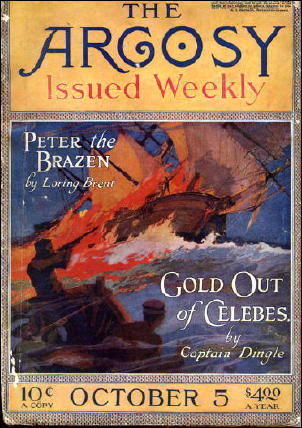November 2013
Monthly Archive
Sat 30 Nov 2013
Posted by Steve under
ReviewsNo Comments
Reviewed by
CAPTAIN FRANK CUNNINGHAM:
S. CARLETON – The La Chance Mine Mystery. Little Brown & Co, hardcover, 1920. Currently available in various Print-on-Demand editions and as a free download from Project Gutenberg.
Nick Stretton kills time while managing his gold mine up in the Canadian woods by conjuring up a mental picture of his ideal dream girl. Under pressure of unusual weariness and ennui, one cold and dreary night, he decides to “chuck his job,” return to civilization where his dream girl must be waiting somewhere, and live a normal life.
When lo! beside the fire of the mine-house living-room, when he enters, sits his dream girl. The “how” of her coming is easily explained, but the “why” leads into a maze of mystery.
— Reprinted from Black Mask magazine, August 1920.
Editorial Comment: If you are as suspicious as I am whenever I see an older book like this with the author’s first name appearing only as an initial or two, you will not be surprised to learn that her full name was Susan Carleton Jones, 1864-1926. This is her only entry in Al Hubin’s Crime Fiction IV. There is a short bio-bibliography online for her here.
Fri 29 Nov 2013
Posted by Steve under
Reviews[4] Comments
AARON MARC STEIN – Hangman’s Row. Doubleday/Crime Club, hardcover, 1982. $10.95.
LESLEY EGAN – Random Death. Doubleday/Crime Club, hardcover, 1982. $10.95.
BERNARD ST. JAMES – The Seven Dreamers. Doubleday/Crime Club, hardcover, 1982. $10.95.
One of the best days of the month, as far as I’m concerned, is the day that the latest selection of review copies from Doubleday’s Crime Club comes in. Now, as most of you already probably know, this is no book club in the ordinary sense of the term. The Crime Club has no dues (save the ever-increasing price of the books), no membership rolls or requirements of any kind, no free enticement offers — only books. Since 1928 or so, they’ve been publishing mysteries and detective stories,at the rate of three or four a month — and there’s no let-up in sight.
Generally speaking, the books published by the Crime Club are prime examples of what’s called “category publishing,” aimed at a pre-set market. Most of them are gobbled up directly by libraries. Few show up anywhere else but the specialized mystery bookshop. There are few that reach the heights of ever being considered for an award of any kind, but there are few that are out-and-out losers, either.
I’m writing this in March, and last month’s selections would have to be considered as pretty typical of what the Crime Club is producing today. There are two books by authors who have become long-time favorites, and one by a relative newcomer.
Aaron Marc Stein, for example, has been writing books, under three different names, for over forty-five years. He never seems to get much notice for his labors, but he can always be depended upon to tell a good, solid story. As Stein, writing about free-lance engineering expert Matt Erridge, his books tend more toward adventure than detection. As rumor has it, this is the way the publishers like it. Book after book, Erridge stumbles across mystery after mystery, and without half trying.
In Hangman’s Row Erridge is in Amsterdam, helping a girl he first meets in the Van Gogh museum. Her boyfriend, it seems, is a decent artist himself. He is also a vociferous spokesman for various liberal causes, and he is in trouble with the police. An artistic array of protest effigies has been spoiled by the addition of a real body to the collection.
Although no more than a minor work at best, the story is enhanced considerably by the expertise Stein displays in local geography and customs. This is like a visit with an old friend — totally relaxed and comfortable leisure-time reading.
Rating: C plus
Leslie Egan, on the other hand, usually has a lot more axes to grind in her books. Like Stein, she has been writing for many years now, and under several different pseudonyms. Her severest critics make much of her open support for various right-wing causes, and in one way or another her mystery novels, most of them police procedurals, usually reflect that same conservative point of view.
Random Death is one of her stories of the Glendale police force. All of the detectives are featured, but the cases of Vic Varallo and Delia Riordan are the ones followed most closely. The use of a policewoman as a main protagonist does not imply any feeling or support for ERA on Egan’s part, however. Ms. Riordan deeply regrets her choice of career as it’s worked out — no husband, no family, none of the things it is “most important for a woman to have.”
Whether you agree or disagree, what makes Egan’s books so alive is the strength of her convictions. As a suburb of Los Angeles, Glendale now seems to be under constant siege by criminal elements. Egan is simply unmatchable in terms of providing a voice of sympathy for the victims. Are the courts listening?
Rating: B plus
As for the third book of the month, its author, Bernard St. James, has written one earlier novel featuring Chief Inspector Blanc of the Paris police. As yet, however, I’d be surprised if either author or character were other than a brand new name to anyone but the most fervent mystery fancier.
The time is sometime in the early to mid-1800’s, making The Seven Dreamers almost as much a historical novel as it is a detective story. Someone — a mesmerist, Blanc quickly deduces — has slit the throats of everyone attending a small dinner party, while they were all sound asleep. Blanc’s problem is not so much to discover who the guilty party is as it is to uncover the link between the victims which gives the culprit his motive.
And here’s where the history lesson comes in. As a mystery novel, The Seven Dreamers seems badly paced and badly padded. As historical fiction, it ends with a note of lofty idealism, viewed with a necessary bit of perspective. The success of the book, it would follow, would depend greatly on how strongly you are in agreement.
Rating: B minus
— Reprinted from
The MYSTERY FANcier, Vol. 6, No. 3, May-June 1982 (slightly revised).
Thu 28 Nov 2013
REVIEWED BY MICHAEL SHONK:
“MEET McGRAW” – An episode of Four Star Playhouse. CBS, 25 February 1954. Four Star Productions. Cast: Frank Lovejoy, Audrey Totter, Ellen Corby, Paul Picerni, Percy Helton, Peter Whitney, and Steve Darrell. Original Story and Screenplay by John and Gwen Bagni. Executive Producer: Don W. Sharpe. Produced by George Haight. Director of Photography: George E. Diskant. Directed by Frank McDonald.
https://www.youtube.com/watch?v=uNnCSW6l-98
The episode is also available to watch at Archive.org.
McGraw (no first name was ever given) was the typical hardboiled PI of the fifties, a tough guy with a soft spot for dames. The story made full use of the tropes of the fifties PI, complete with the less than handsome PI wearing a fedora and cheap suit as he smokes a cigarette while walking down dark streets to visit a bar to meet the femme fatale. McGraw was different in one way he was a traveling trouble-shooter as opposed to a PI with a set location.
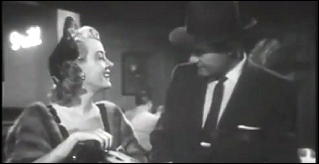
The writing was better than most from that the era, overcoming the limited budget and primitive filming conditions with the proper banter and a strong complicated plot. Writers John and Gwen Bagni were a married couple. He would die in 1954 and she would go on to write for many TV series including ALFRED HITCHCOCK PRESENTS. Gwen Bagni (with Paul Dubov) would later develop HONEY WEST for TV.
Director Frank McDonald was a successful director of low budget films in the thirties and forties and moved over to television in the fifties where he continued into the sixties. His direction on MEET McGRAW was professional but nothing special.

The cast fit perfectly in their roles. Frank Lovejoy looked and sounded the part of hardboiled trouble-shooter McGraw. Audrey Totter was well casted as she had a history of playing the hard tough dame in films such as POSTMAN ALWAYS RINGS TWICE, LADY IN THE LAKE and THE SET UP. The supporting cast featured wonderful character actors such as Ellen Corby, Peter Whitney and Percy Helton.
According to TVTango.com, the episode aired opposite THE RAY BOLGER SHOW on ABC, BROADWAY TO HOLLYWOOD: HEADLINE CLUES on Dumont and TREASURY MEN IN ACTION on NBC.
Three years later and with the growing popularity of the TV detective, MEET McGRAW would become a weekly series on NBC. The series would air Tuesday at 9pm from July 2, 1957 to April 22, 1958.
“Broadcasting†review (July 8, 1957) of the first NBC episode was favorable, especially for Blake Edwards’ script. It also listed some other information. Production cost was $36,000. The series was sponsored by Proctor & Gamble through Benton and Bowles. Frank Lovejoy repeated his role as McGraw. The series writers alternated among Blake Edwards, Frederic Brady, E. Jack Newman, and Lowell Barrington. Directors alternated between John Peyser, Harold Schuster and Anton Leader. Producer was Warren Lewis. The series was filmed and each episode was a half-hour long.
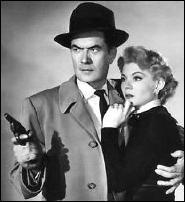
Forty-one episodes were produced for MEET McGRAW on NBC. Adding the FOUR STAR PLAYHOUSE episode made forty-two half-hour episodes available for syndication. But before it went into syndication, ABC would air the reruns starting November 23, 1958 on Sunday (it had three different time slots during its run – 10pm, 9:30pm and 10:30pm). It would remain on the ABC network schedule until September 20, 1959. ABC Films released it into syndication for local markets on October 1, 1959.
Despite claims by Wikipedia and IMDb, I can find no record of the series being called ADVENTURES OF McGRAW. “Broadcasting†always referred to it as MEET McGRAW, from its beginnings to its days in syndication (as late as March 25, 1963). I suspect (but can’t prove) the title ADVENTURES OF MCGRAW might have been used when Official Films took over the syndication rights from ABC Films (whenever that was).
Wed 27 Nov 2013
Posted by Steve under
Reviews[5] Comments
THE BACKWARD REVIEWER
William F. Deeck
JAMES CORBETT – Gallows Wait. Herbert Jenkins, UK, hardcover, 1947. No US edition.
Detective-Inspector Cranston has recently finished testifying at the trial of a man accused of murdering his girlfriend. Cranston has told the court that the woman was strangled and that there were no fingerprints on the body. He deduces that the murderer used gloves. Not a great deduction, or a good deduction, or even a quick deduction, but it’s the most sensible deduction he makes in this novel.
Of course, later on he says the murderer had strangled the girl … with his bare hands,” but neither Corbett nor his characters let blatant contradictions bother them.
As the judge in the trial is about to place upon his head the black cloth and pass sentence, he dies, having apparently ingested poison a few minutes before. Luckily, at !east in the author’s view, Cranston is still in the courtroom, for no particular reason but then many things happen in Corbett’s novels for no particular reason.
Cranston investigates and finds a blackmail letter, unopened, in the judge’s overcoat pocket. With the letter is a miniature dagger. Since he finds another miniature dagger in the judge’s chambers, Cranston deduces that there was a previous letter. Good thinking? Well, the letter Cranston discovers refers to a previous letter, so perhaps Cranston was cheating a bit.
This is not one of Corbett’s wonderfully awful novels, bad as it is, but it does have some of the patented Corbett touches. For example, Cranston lights a cigarette with a match and stands twisting the spent match. Then he puts his lighter back in his pocket.
Cranston suspects one man may be the major villain. There’s no reason for this except the man is the only character who could be the bad guy. Cranston arranges for his sergeant to interview an old lady who may have some information about a hit-and-run victim and makes sure that the suspected villain is aware of this forthcoming questioning.
Cranston’s theory is that the villain will waylay the sergeant, and he, Cranston, will come “in the good old nick of time” and effect a rescue. Not having Cranston’s devious mind, the villain and his henchmen simply kidnap the woman.
One more example of Corbett’s thrillers that don’t but that do amuse, albeit unintentionally.
— From The MYSTERY FANcier, Vol. 10, No. 1, Winter 1988.
Editorial Note: Previous Corbett thrillers reviewed by Bill on this blog are Vampires of the Skies and Murder While You Wait. (Follow the links also for much more commentary on Corbett.)
Tue 26 Nov 2013
A Review by MIKE TOONEY:
JOHN DICKSON CARR’S “THE THREE COFFINS”: A HOLLOW VICTORY? by J. Morris. CADS Supplement 13, 2011. 54 pages; illustrated with diagrams, maps, and photographs. Appendix I: Floor Plan of the Crime Scene. Appendix II: “The London of THE THREE COFFINS” by Tony Medawar.
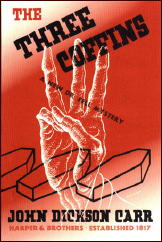
Previously on ONTOS, there was a posting about John Dickson Carr’s immensely popular THE THREE COFFINS (a.k.a. THE HOLLOW MAN) editorially wondering out loud whether it might be his best novel.
If you’re in the same crowd with Edward D. Hoch and Julian Symons who thought it was, after reading J. Morris’s CADS monograph, you might change your mind.
In his introduction, Morris tells us:
“There are elements of THE THREE COFFINS which I admire greatly, and these will be pointed out from time to time in what follows, and highlighted in the concluding section. However, my analysis is overall extremely critical of Carr’s book. Unlike, for instance, THE CROOKED HINGE or THE JUDAS WINDOW … THE THREE COFFINS, in my view as against [Douglas] Greene’s, can only disappoint, the more carefully it is reread. Its defects are wider and deeper than the two or three most commonly noted difficulties with the main plot construction.”
Essentially, by a close reading of the text, Morris has identified over two dozen mistakes which Carr and his supposedly punctilious editors somehow overlooked when the book went to press. Typically these errors are of a factual or logical nature, given what has been established in Carr’s narrative, thus threatening to unravel the author’s own carefully wrought construction:
“I will point out discrepancies, unexplained facts, impossibilities, implausibilities, misdirection that I consider unfair—and occasional moments of inspired mystification. In any analysis of this sort, meta-questions about fair-play conventions will necessarily arise, and I will point these out but not pursue them at great length.”
As Morris notes, Carr occasionally trips himself up due to a tendency—not always indulged in—towards what Morris terms Unnecessary Webwork, imposing thematic resonances that could easily have been dispensed with.
Among the twenty-five “problems” Morris discovers in THE THREE COFFINS, he pinpoints six of them as being major flaws:
– “The Problem of the Unnoticed Haze”
– “The Problem of the Dying Man’s Lie”
– “The Problem of the Bamboozled Detective”
– “The Problem of the Panicked Murderer”
– “The Famous Time Problem”
– “The Problem of Twenty Minutes”
To be fair to Carr, Morris also gives six good reasons why THE THREE COFFINS should not be scorned, even with all its defects.
And be forewarned: Morris tells us that A HOLLOW VICTORY? is “one huge spoiler, for obvious reasons. Those unfamiliar with THE THREE COFFINS should leave the premises.”
All in all, A HOLLOW VICTORY? is a fine addition to Golden Age of Detection scholarship.
Editorial Comment: This review first appeared on Mike’s own new blog:
http://carrdickson.blogspot.com/. Check it out.
Mon 25 Nov 2013
Reviewed by DAVID L. VINEYARD:
THE POPPY IS ALSO A FLOWER (aka The Opium Connection). Made-for-TV movie, ABC, 22 April 1966. Expanded theatrical release, 1967 [?]. Yul Brynner, Stephen Boyd, Angie Dickinson, Rita Hayworth, Trevor Howard, E.G. Marshall, Omar Sharif, Eli Wallach, Jack Hawkins, Gilbert Roland, Hugh Griffith, Marcello Mastroianni, Trini Lopez, Senta Berger, Barry Sullivan, Nadja Tiller, Harold Sakata, Anthony Quayle, George Geret, Howard Vernon. Narrator: Grace Kelly. Screenplay by Jo Eisinger, based on a story by Ian Fleming. Directed by Terence Young.
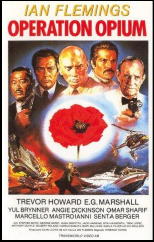
“The poppy has no smell, not even the smell of evil. It’s just a ordinary flower, bright, innocent looking; and yet there are many many people who would have to be convinced — and it would take some convincing — that the poppy is also a flower.”
Grace Kelly: Prologue to
The Poppy is Also a Flower.
The amount of tripe written about this big budget made for television film done for the United Nations as an anti-drug project, and originally shown on ABC television in this country is amazing. For some reason it seems to drive some critics and viewers to extremes of near insanity far beyond any problems it has.
In reality it is a fair action adventure film with a point that deals with the efforts of the UN and the then Iranian secret police to deal with the trade in illegal opium.
I say any film that features Gilbert Roland as the villain, Rita Hayworth as a junkie, and E. G. Marshall in hand to hand combat with Harold (Oddjob) Sakata can’t be all bad. That’s not to mention wry Hugh Griffith as a opium selling bandit chief, Eli Wallach as a former Mafioso deported from the US, and Angie Dickinson as a mysterious woman getting ready for a shower with E. G. Marshall hiding under her bed is at least worth watching.
Did I mention the two girls in bikinis wrestling in the nightclub?
In 1966 that wasn’t something you saw often on television.
Trini Lopez even sings “La Bamba” and “Lemon Tree.”
Okay, that may not be entirely in its favor.
When UN agent Benson (Stephen Boyd) buys up the opium crop before drug king Serge Marko’s (Gilbert Roland) people can he promptly gets killed but not before destroying the opium. Now Marko is under pressure to secure the next supply or be out $10 million dollars.
Marko’s Manager: Serge Marko is a great guy to work for if you give him what he wants from you. If you can’t you’re dead.
Arriving in Iran to assist in the hunt for the opium connection is UN agent Sam Lincoln (Trevor Howard) and US Treasury Agent Coley Johns (E.G Marshall) No sooner have UN operative Omar Sharif and Iranian soldier Yul Brynner briefed them on their plan to irradiate the opium* so it can be tracked than Angie Dickinson shows up as Benson’s widow. But Benson wasn’t married.
Marshall and Howard make a good team with a nice playful attitude and give and take:
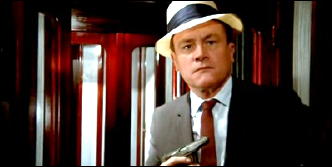
Lincoln: When duty calls …
Johns: You’re never there.
Considering everyone was working for nothing the performances are better than they had to be.
It’s not Oscar material, but it is nothing like the nonsense written about it.
The dubbing isn’t too good, but that’s hardly reason to have a hissy fit.
Leonard Maltin rates it a BOMB.
Leonard Maltin gives three stars to Roger Corman’s The Undead.
I’m just saying …
Sam distracts Angie while Coley searches her room which is how he ends up under her bed while she prepares to take a shower.
Mrs. Benson eludes them but they move on to Yul Brynner’s plan to raid the opium supply held by bandit chief Hugh Griffith and irradiate it, leading to a colorful raid on horseback in the mountains. It’s well staged and exciting shot on location among some spectacular scenery.
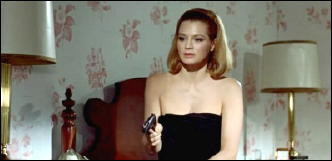
Hugh Griffith: The prophet has said only what is true must be believed, and fifty guns are fifty indisputable truths.
With the opium irradiated its now up to Lincoln and Johns to follow its trail back to the man behind the distribution, and the trail leads to Naples and deported gangster Happy Lucarno (Eli Wallach) who agrees to help to clear himself of suspicion.
Senta Berger has a nice bit as a drug addicted nightclub performer, and Rita Hayworth one of her last roles as the addicted wife of Marko the drug kingpin. Anthony Quayle is a South African ship’s captain who is a key part of Marko’s smuggling operation.
The plot builds to an exciting showdown with Johns and Mrs. Benson trapped by Marko on the Blue Train out of Marseilles to Lyon as they get the evidence from Mrs. Marko that will destroy him. There is a well staged battle between Marshall and Sakata in the baggage car and an exciting chase through the train yard with a final bitter triumphant line for Johns.
Johns: There’ll always be another one to take his place. The answer is miles and miles away — in the poppy fields.
The Poppy Is Also a Flower moves quickly, generates some suspense, features good location work, and unfolds logically to an exciting finale, pausing long enough to develop the characters of the two protagonists and well done vignettes by Brynner, Griffith, Quayle, Mastroianni. Berger, Wallach, and Hayworth. Considering it could have been preachy, stiff, and self important it is not only better than we might expect, but an exciting international chase.
You’ve seen better, but you’ve certainly seen much worse.
I’ve said it before. No film was ever worse for the presence of Gilbert Roland.
But I would like to know what it is about this film that gives some people such an irrational dose of dyspepsia. It’s not dull, it’s not stupid, and it’s not badly written or directed. But it rubs some people the wrong way to a surprising degree.
I can understand not liking it, but the reaction it provokes is all out of proportion to any of its failings.
Maybe that irradiated opium is more dangerous than I realized.
Or maybe the idea of E G. Marshall as James Bond causes some people to froth at the mouth.
* Perhaps the single silliest critique of this one are the countless reviews I’ve read worrying about what would have happened to the poor addicts if they got hold of the irradiated opium. Aside from being so ignorant as to not understand the nature of radiation or that opium is not sold in bulk , but cut and sold as cocaine, heroin, or morphine in doses so small as to make radiation poisoning impossible, the critics seem totally incapable of recognizing this is fiction.
If a drug addict got hold of a kilo of uncut opium chances are he would have died of something else long before radiation poisoning.
When did people get so politically correct they worry about non existent irradiated opium poisoning non existent drug addicts?
No fictional drug addicts were harmed in the making of this picture.
Sun 24 Nov 2013
Posted by Steve under
Reviews[3] Comments
CHARLOTTE MacLEOD – Wrack and Rune. Doubleday/Crime Club, hardcover, 1982. Avon, reprint paperback, 1982.
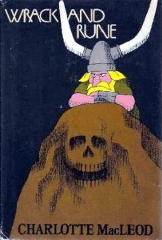
Charlotte MacLeod is a relative newcomer to the field of mystery writing, but in the past two or three years she has certainly shown all the signs of becoming a name to reckon with.
Agatha Christie is no longer with us, but even if she were, she’d have no cause for fear. What makes these adventures of Peter Shandy so highly anticipated, at least in some circles, is hardly the detection involved, though never fear: there is that, too.
But it’s rather the pure laugh-out-loud sort of humor that pervades MacLeod’s stories; that, plus the fact that the large proportion of her characters, many of them old friends to us now, actually like each other. Shandy is a professor of agrology at Balaclava College, up somewhere in nearby Massachusetts, but his fame at becoming involved in cases of murder has spread from the campus clear across Balaclava County, clearly the wildest piece of country this side of Appalachia.
A runestone found in an ancient farmstead may be the harbinger of buried Viking treasure to come. The prospect brings out the worst in some people, and before you can say Thorkjeld Svenson, more than the college experts have quickly overrun the site.
Death by quicklime also results, as well as a few other assorted attempts at murder. There’s never been such excitement in Lumpkin Corners as this.
This particular outing, Shandy’s third appearance now, may be too long by about a third for a constant level of such inspired insanity to be properly maintained, but I doubt you’ll have as much fun with a detective novel as you will with this one.
That is, until the next one.
Rating: C plus.
— Reprinted from
The MYSTERY FANcier, Vol. 6, No. 3, May-June 1982 (slightly revised).This review first appeared in the
Hartford Courant.
Thu 21 Nov 2013
Reviewed by
CAPTAIN FRANK CUNNINGHAM:
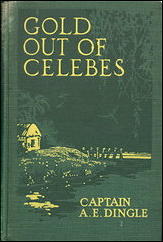
CAPTAIN A. E. DINGLE – Gold Out of Celebes. Little Brown and Co, US, hardcover, 1920. Previously serialized in The Argosy, October 5 through November 2, 1918. Several POD editions are currently available, as well as a free download from Project Gutenberg.
Jack Barry, a seaman stranded in Batavia, and Tom Little, an enthusiastic salesman lusting for adventure, join forces in the employment of one Cornelius Houton, the owner of various interests in the island of Celebes. Thither the two men journey in a boat provided by Houten and commanded by Barry to investigate an agent of whose honesty Houten has become suspicious.
On their arrival the two quickly proceed to concern themselves with an effort to save a fair young missionary from the evil intentions of another agent. Things happen quickly to the two young men, not always pleasantly, and Little’s thirst for action is fully gratified, while the perplexing attitude of the charming missionary, who apparently does not wish to be saved, reduces Barry to desperation.
Bewilderment succeeds bewilderment in their minds as they pass from one puzzling circumstance to another, but doggedly they hold to their purpose. Not until the very close of the story do the incidents link up and the mystery unfold itself to the two adventurous spirits.
— Reprinted from Black Mask magazine, August 1920.
Wed 20 Nov 2013
Posted by Steve under
Reviews[2] Comments
THE BACKWARD REVIEWER
William F. Deeck
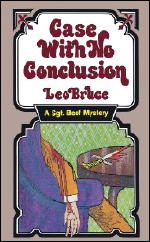
LEO BRUCE – Case with No Conclusion. Academy Chicago, paperback, 1984. First published in the UK by Bles, 1939.
William Beef, former sergeant in the police force, has retired and taken up private investigation from quarters near Baker Street. Lionel Townsend, who recorded Beef’s previous two investigations, asserts that any claim that Beef “should be able to earn a living as a private investigator was beyond all human credulity.”
Nonetheless, a client reasonably prompt!y appears, one Peter Ferrers, whose brother has been arrested for murdering a doctor. The doctor’s body was found in Stewart Ferrers’ library, with Stewart’s knife in the corpse’s throat and only Stewart’s fingerprints on the knife. There had, as is usual in such cases, been a violent quarrel between the two men only hours before. But what means the whiskey in the library that had been adulterated with arsenic?
Beef does an excellent job of investigating in his own inimitable manner and concludes that Stewart Ferrers is indeed not guilty. Beef is, however, unable to prove that Ferrers didn’t do it or to apprehend the someone else who did do it.
There is consternation, of course, among mystery writers and amateur detectives. As one publisher put it, “If novelists’ investigators cannot solve the problems created, who in the world can?” Monsieur Amer Picon, who appeared in Beef’s first major investigation, Case for Three Detectives, and who bears a distinct resemblance to Hercule Poirot, reacted this way: “Helas! Mon Dieu. Je ne sais quoi.”
Such a failure by an amateur investigator is certainly unprecedented, and this may have been why Case with No Conclusion was not published in the US until 1984, whereas the next book in the series, Case with Four Clowns, a considerably lesser mystery, did find a publisher here in 1939.
Suffice it to say that there is more here than meets the eye, but reviewers rules do not permit that additional information to be disclosed. Read and enjoy.
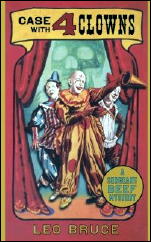
LEO BRUCE – Case with Four Clowns. Frederick A. Stokes, US, hardcover, 1940. Academy Chicago, US, paperback, 2010. First published in the UK by Davies, hardcover, 1939.
Sergeant William Beef, formerly of the police force, is now in unwilling retirement as a private investigator because of his last investigation, Case with No Conclusion. Beef was unable to prove that the man charged with a murder had not done it, although Beef was certain that the man had not committed the crime.
No one will hire Beef, but he gets a note from his nephew, who is traveling with a circus. The nephew says he has been told by a gypsy fortune teller that there will be a murder at the circus.
Beef manages to talk Lionel Townsend, the doubting chronicler of his investigations, into joining him in a tour with the circus. There Beef uncovers lots of enmities and jealousies, what might be an attempt at murder, and several “accidents” that could have been efforts at homicide.
Despite a great deal of confusion and conflict, Beef, using his vast common sense, manages to make sense of the case. A murder does occur, but it’s not Beef’s fault.
Circus fans should enjoy this one, and so should Beef admirers. I found it a bit slow, but Beef’s comments about mystery writers and amateur detectives kept me entertained. Townsend as chronicler is always amusing, as when he seriously tells Beef:
“… Before we started on this business I had my eye on a young lady school-teacher in Murston who, I have been told, solves every interesting crime by an algebraic process which she works out during her scripture classes. She would, I believe, have made an excellent investigator for me to chronicle, instead of wasting my time running in and out of public-houses after you.”
Why Beef puts up with Townsend and vice versa is as big a mystery as any that Beef has investigated.
— From The MYSTERY FANcier, Vol. 10, No. 1, Winter 1988.
Tue 19 Nov 2013
THE ARMCHAIR REVIEWER
Allen J. Hubin
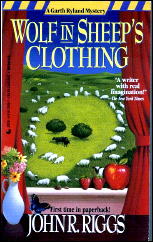
JOHN R. RIGGS – Wolf in Sheep’s Clothing. Dembner Books, hardcover, 1989. Jove, paperback reprint, 1993.
Wolf in Sheep’s Clothing is the first of John R. Riggs’ five novels about Garth Ryland I’ve read, and on this evidence I’ve missed four previous treats.
Ryland publishes a weekly newspaper in the small Wisconsin town of Oakalla. Here he’s concerned about Diana, whom he loved and lost to English professor Devin LeMay. She and LeMay went to a cabin somewhere in northern Minnesota and both are overdue to return.
His anxiety mounting, Garth checks out LeMay’s home (vacant, but with one most peculiar room, and watched over by a lovesick neighbor) and the one-time local resident who owns that Minnesota cabin. These trails lead to fearsome territories.
Solid suspense, atmosphere thick enough to cut and package, vivid characters. Memorable stuff.
— Reprinted from The MYSTERY FANcier,
Vol. 12, No. 4, Fall 1990.
The Garth Ryland series —
1. The Last Laugh (1984)
2. Let Sleeping Dogs Lie (1986)
3. The Glory Hound (1987)
4. Haunt of the Nightingale (1988)
5. Wolf in Sheep’s Clothing (1989)
6. One Man’s Poison (1991)
7. Dead Letter (1992)
8. A Dragon Lives Forever (1992)
9. Cold Hearts and Gentle People (1994)
10. Killing Frost (1995)
11. Snow on the Roses (1996)
12. He Who Waits (1997)
13. The Lost Scout (1998)
14. Nothin’ Short of Dyin’ (2011)
15. After the Petals Go (2012)
Editorial Comment: For a local newspaper story on John R. Riggs and his resumption of the Garth Ryland series after a lapse of 12 years, go here.
Next Page »







